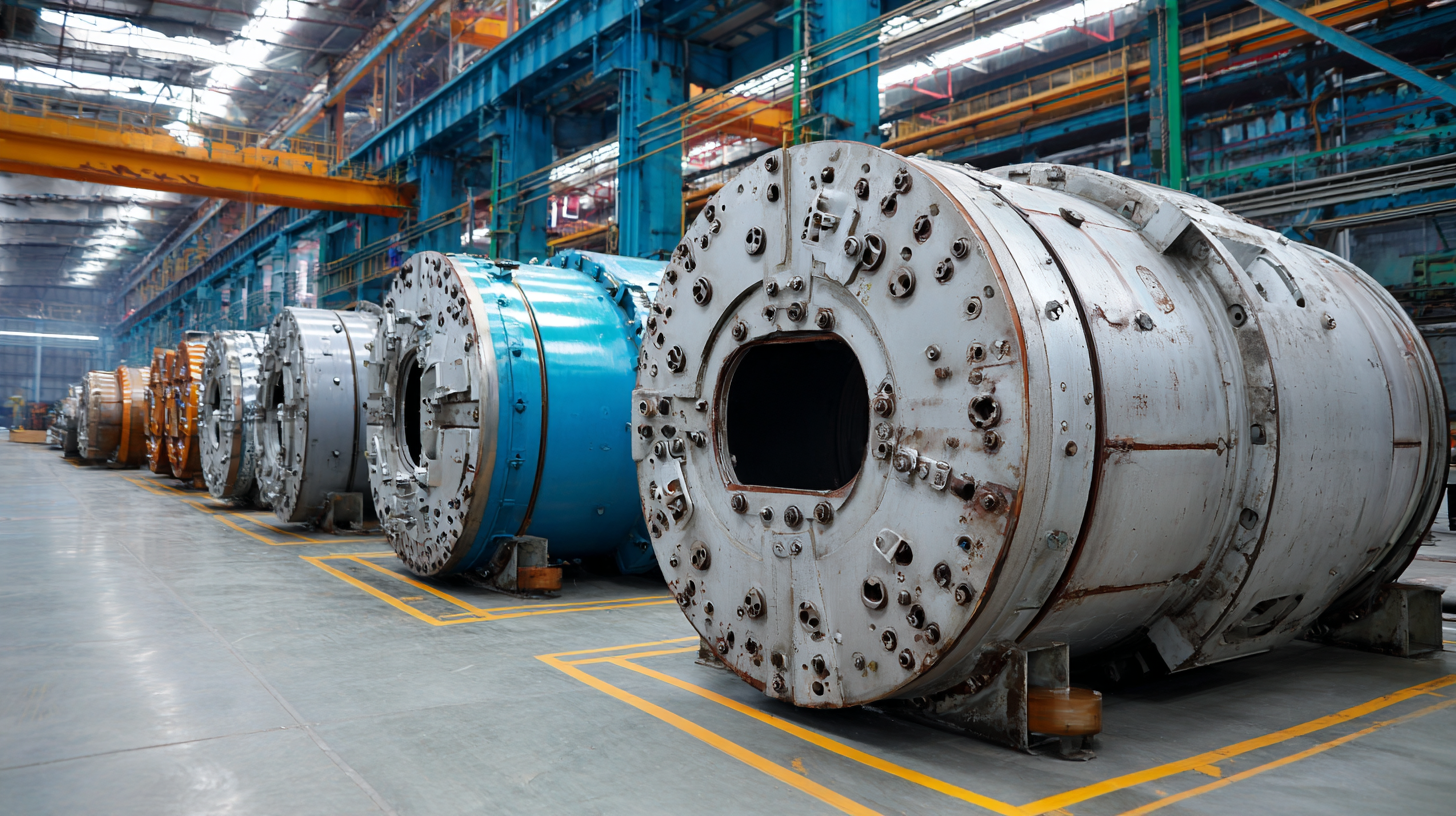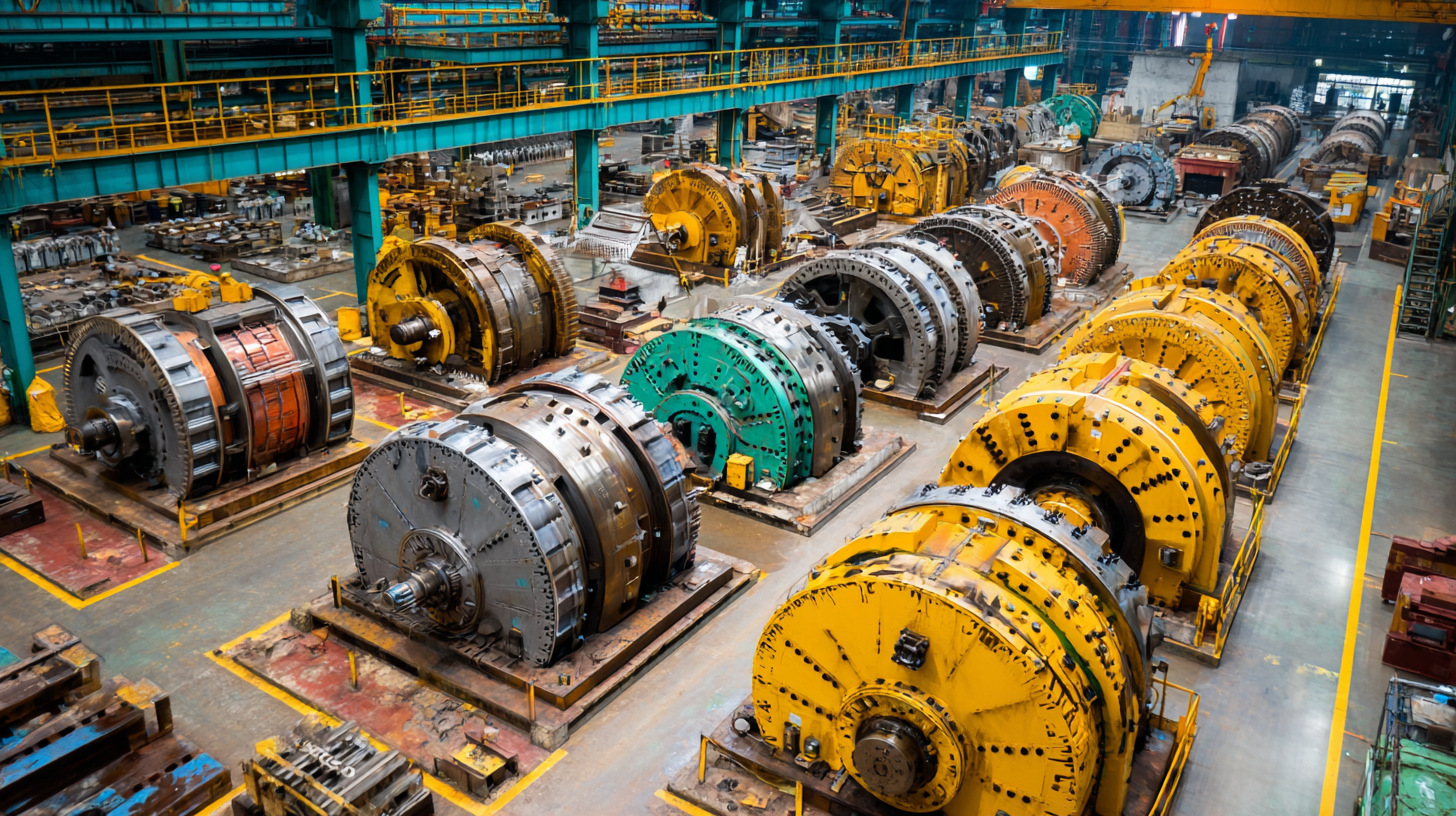
-
Home
-
About Us
-
Products
-
News
-
Blog
-
Contact Us
Leave Your Message

In today's competitive industrial landscape, sourcing high-quality components is crucial for maintaining efficiency and performance in mining and mineral processing operations. Among these components, Ball Mill SAG Mill Liners stand out as essential elements that directly influence the lifespan and effectiveness of milling equipment. This blog delves into the unmatched quality and service offered by manufacturers in China, exploring the intricate technical specifications and standards that differentiate their products in the global market. As global buyers seek reliable partners who can deliver not only performance but also value, understanding the nuances of Ball Mill SAG Mill Liners is imperative. We'll also provide insights on how to assess these liners effectively, ensuring that you make informed decisions that enhance your operational outcomes.

 High-quality mill liners play a crucial role in
optimizing the performance of ball mills and SAG mills, significantly impacting throughput and efficiency. According
to a report by Global Market Insights, the replacement of worn-out mill liners
can improve energy efficiency by 10-15%, thereby reducing operational costs.
Mill liners are not merely protective barriers; they directly influence the grinding process, ensuring uniform wear
and maintaining the desired particle size distribution. The right materials, such as manganese steel or rubber
composites, can enhance the life cycle of the liners while providing better wear resistance and impact strength.
High-quality mill liners play a crucial role in
optimizing the performance of ball mills and SAG mills, significantly impacting throughput and efficiency. According
to a report by Global Market Insights, the replacement of worn-out mill liners
can improve energy efficiency by 10-15%, thereby reducing operational costs.
Mill liners are not merely protective barriers; they directly influence the grinding process, ensuring uniform wear
and maintaining the desired particle size distribution. The right materials, such as manganese steel or rubber
composites, can enhance the life cycle of the liners while providing better wear resistance and impact strength.
Tip: When selecting mill liners, consider using advanced simulation tools that analyze the flow dynamics and wear patterns to help you choose the optimal liner design.
Additionally, an efficient liner design can contribute to significant savings in downtime and maintenance. A study published in the Journal of Mining Science indicates that poorly fitted liners can lead to a 20% increase in maintenance costs due to frequent replacements. By investing in high-quality liners tailored to the specific milling process, manufacturers can ultimately enhance productivity and reduce overall expenses.
Tip: Regular inspections and proactive maintenance of mill liners can prevent unexpected failures, ensuring that your operations run smoothly without costly interruptions.
When it comes to SAG mill operations, the choice of liners significantly impacts performance and longevity. There are several types of SAG mill liners available in the market, each designed to meet specific operational requirements and optimize the grinding process.
One of the most common types is the rubber liner, known for its ability to absorb shock and reduce wear on mill components. These liners are lightweight and can improve the efficiency of material flow, which is crucial for achieving consistent grinding results.
Another popular choice is the hard metal liner, often made from alloys such as manganese steel. These liners provide exceptional wear resistance and are ideal for high-energy environments where the risk of impact is significant.
Their durability ensures extended service life, making them a cost-effective option for many mining operations. Furthermore, hybrid liners, which combine the advantages of both rubber and metal, are increasingly gaining attention.
They offer improved wear life and performance, addressing the specific needs of various processing plants. Understanding these different types of SAG mill liners and their unique benefits is essential for global buyers looking to maximize productivity in their operations.
When sourcing mill liners from China, it is crucial to consider several key factors that can significantly impact your procurement decisions. The projected growth in the global mill liners market, expanding from $2.83 billion in 2025 to $4.07 billion by 2032, underscores the importance of making informed sourcing choices. As production facilities adapt, such as during periods of blast furnace maintenance, fluctuations in supply may arise, affecting both pricing and availability of materials like pig iron. Being aware of these dynamics can help you navigate potential disruptions in your supply chain.
Tip 1: Evaluate supplier reliability by assessing their past delivery performance and quality assurance processes. Establishing a strong relationship with suppliers will ensure you have access to the best products and services available.
Tip 2: Clearly communicate your specifications and expectations. This will minimize misunderstandings and ensure that the mill liners you receive meet your operational requirements.
Additionally, keep an eye on market trends, such as China's manufacturing activity and the overall economic landscape, to make proactive adjustments in your sourcing strategy. Understanding these elements can be vital for maintaining competitiveness in the evolving global market.
In the ever-evolving mill liners market, the superiority of Chinese manufacturers is becoming increasingly apparent. A comparative analysis of Chinese versus global mill liner producers reveals significant advancements in innovation, quality, and pricing. Chinese companies are not only enhancing their manufacturing capabilities but also integrating advanced technologies in production processes, ensuring that their liners meet the rigorous demands of modern milling operations. This shift is evident in the growing market share of metallic, rubber, and composite mill liners produced in China, which are now favored for their durability and performance efficiency.
Moreover, the robust academic landscape in China has propelled domestic industries towards groundbreaking advancements. Chinese universities are collaborating closely with companies, fostering an environment where research and practical applications go hand in hand. As a result, this synergy has significantly elevated the standards of mill liners, positioning Chinese manufacturers as leaders in innovation. Global buyers, therefore, are not just acquiring products but also gaining access to cutting-edge solutions that enhance operational efficiency and reduce long-term costs.
This chart illustrates the comparative analysis of quality and service levels between Chinese and Global mill liner manufacturers based on various performance metrics such as durability, cost-effectiveness, lead time, and customer satisfaction.
When it comes to selecting mill liners, durability and efficiency are paramount. The right choice can significantly influence your mill's operational performance and maintenance costs. First and foremost, consider the material of the liner. High-quality steel and rubber composites often offer superior wear resistance and impact absorption, which can lead to a longer lifespan and reduced downtime. Additionally, understanding the specific requirements of your operation—such as the type of minerals being processed and the mill's operating conditions—can guide you to the most suitable liner materials that will enhance both durability and efficiency.

Another critical factor in mill liner selection is the design. Liners come in various shapes and profiles, each optimized for specific grinding tasks. For instance, wave liners can improve the lifting of the material and enhance the grinding action, while lifter bars can be tailored to create the perfect trajectory for the materials being processed. Collaborating with manufacturers that specialize in engineering customized solutions is key. They can provide insights into the best design that maximizes the performance of your milling operation, ensuring that you achieve the highest levels of efficiency while minimizing wear and tear on your equipment.